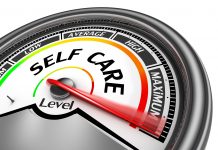People who are 75 and older are the fastest-growing group receiving dialysis treatments. But they’re also the group that experiences side effects with the most intensity. That means it’s especially important for seniors to be aware of what all is involved, and make informed decisions about the care they want.
Dialysis is a process where a fluid called dialysate cleans toxins from the blood and removes excess fluids from the body. There are two types of dialysis, peritoneal dialysis (PD) and hemodialysis (HD). While dialysis is an important, life-saving treatment, it can come with some side effects. Knowing what these side effects are can help you keep an eye out for them, and raise the alert to your doctor, if you need to.
Common side effects of both kinds of dialysis include:
- Fatigue
No matter what kind of dialysis you’re on, it takes a lot out of you. Between the decreased kidney function, the strain of dialysis, the dietary restrictions, and the general stress, many people report feeling exhausted, tired, and drained.
- Infection
Both types of dialysis come with a risk of infection. You’ll need to watch out for infections at the access point, whether that’s a fistula, graft, or catheter. It’s also possible for those infections to develop into sepsis – an infection of the blood. If you’re on peritoneal dialysis, you’ll want to watch out for peritonitis – an infection of the abdominal wall where the dialysis takes place.
- Sexual side effects
People on dialysis may experience a loss of libido, as well as erectile dysfunction or vaginal dryness. - Itchy skin
Many people on dialysis report itchy skin. Some, but not all, say that the itchiness is worse right after a treatment. Itchy skin can also be caused by factors related to ESRD, though. It can be a sign that the sweat glands aren’t working the way they should, or a sign that your phosphorus level is too high. If you’re experiencing itchiness, be sure to mention it to your doctor.
- Emotional/mental health side effects
People on dialysis commonly report depression, anxiety, and body image problems.
- Dementia
Among seniors, dialysis has been associated with an increased risk of dementia.
Hemodialysis
For hemodialysis, doctors make an access point in your circulatory system. There are two types, but they generally involve giving the dialysis machine access to an artery and a vein. The dialysis machine draws blood from the body and cleanses it in a machine. The machine filters out toxins and excess fluid. This is an important and necessary treatment, but it does have some side effects.
- Low blood pressure
Because so much fluid is being removed, hemodialysis can drastically lower blood pressure. This can be a good thing. Many people find that excess fluid from ESRD raises their blood pressure, anyway. But every person is different, and it’s important to monitor blood pressure for people who are on dialysis.
- Organ stunning
Even when blood pressure is too high, lowering it too quickly can “stun” the heart, causing it too suddenly feel like it isn’t getting enough blood. This can lead to other cardiac problems like irregular heart rate or even a heart attack.
- Muscle cramps
Many people on hemodialysis get muscle cramps, especially in their legs. This seems to be from the sudden fluid loss. If it’s particularly painful, you can talk to your treatment team about medications to help manage the discomfort.
- Blood clots at the access
Some people experience blood clots at their access point. The clot can slow down or even block blood flow. The clot will have to be removed by surgery or with a targeted medication.
- Insomnia
Many people with ESRD have poor sleep quality or insomnia. We aren’t exactly sure what causes it, but it seems to be that people who perform dialysis in the morning have higher rates of insomnia than people who do it in the afternoon.
- Dry mouth
Because dialysis removes fluid – and because people with ESRD have to restrict fluids to begin with – many people experience dry mouth. Practicing good oral hygiene and finding ways to manage thirst while reducing fluid intake can help.
Peritoneal Dialysis Side Effects
With peritoneal dialysis, your care team inserts a catheter into your abdomen. You cycle dialysate in and out of your abdominal cavity over a period of several hours. Because it doesn’t’ remove so much fluid so quickly, peritoneal dialysis is gentler on the heart than most hemodialysis schedules allow. But it does come with other side effects.
- Feeling too full/malnutrition
Peritoneal dialysis involves cycling fluid through the abdomen. That can create a constant sensation of feeling like you’ve eaten too much. That may not sound like a huge problem, but it can be. It can lead to people eating less, so much so that they experience malnutrition. Be sure that you’re eating enough, even if you don’t always feel like it. It’s an important part of taking care of yourself.
- Weight gain and bloating
Fluid retention is already a problem with ESRD. Because the kidneys aren’t filtering out fluids as efficiently, fluid retention and bloating can occur. Peritoneal dialysis helps, but it also adds fluids to the body in its own way, as the dialysate goes directly into the abdominal cavity. Sometimes sugar from the dialysate gets absorbed into the body, as well. Eating well is always important with ESRD, but it can be especially important on PD. Consult a nutritionist on your care team, and be sure to stick to a kidney-friendly diet.
- Hernia
Hernias happen when an organ pushes through the wall of muscle or tissue that holds them in place. The abdomen is the most common place for a hernia, and PD puts organs at even higher risk. Since PD involves placing a catheter in the abdominal wall, the muscles that hold everything together are weakened. As dialysis fluid is cycled in and out every day, it puts pressure on those already-weakened muscles. This increases the odds of a hernia. Hernias require surgery to fix.
Dialysis can give back years of life that kidney failure would otherwise keep them from experiencing. For many people, those are retirement years, when you have the most freedom to do what you want. Just know what side effects you’re likely to encounter, and know when to bring them up to your care team.

























